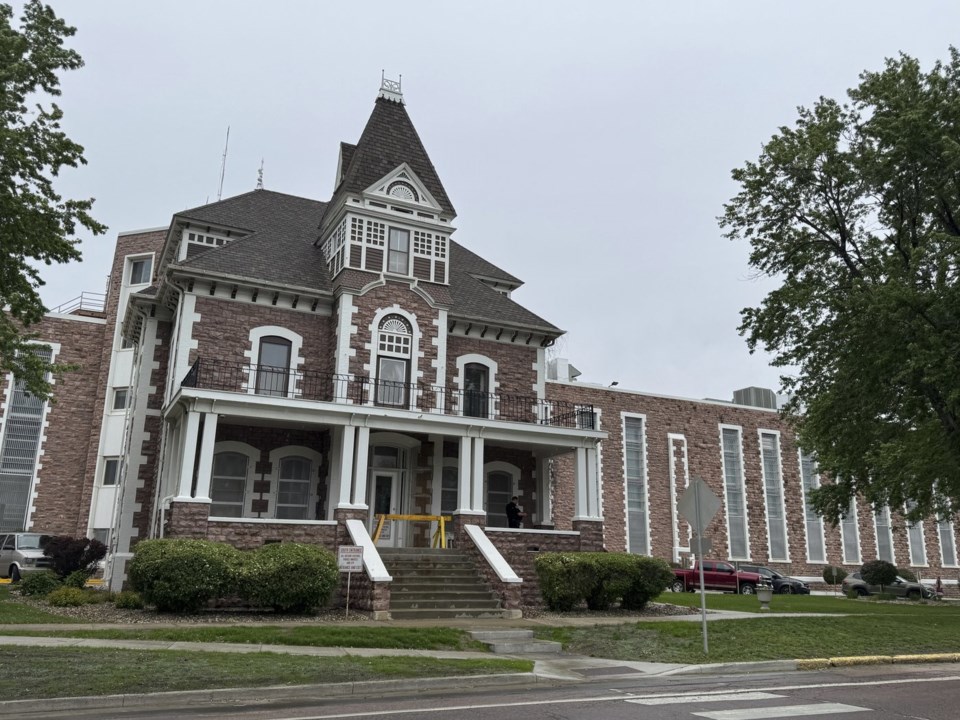SIOUX FALLS, S.D. (AP) — Two years after approving a tough-on-crime sentencing law, South Dakota is scrambling to deal with the price tag for that legislation: Housing thousands of additional inmates could require up to $2 billion in the next decade.
That’s a lot of money for a state with one of the lowest populations in the U.S., but a consultant said it’s needed to keep pace with an anticipated 34% surge of new inmates in the next decade as a result of South Dakota’s tough criminal justice laws. And while officials are grumbling about the cost, they don't seem concerned with the laws that are driving the need even as national crime rates are dropping.
“Crime has been falling everywhere in the country, with historic drops in crime in the last year or two,” said Bob Libal, senior campaign strategist at the criminal justice nonprofit The Sentencing Project. “It’s a particularly unusual time to be investing $2 billion in prisons.”
Some Democratic-led states have worked to and enact changes to lower inmate populations, but that's a tough sell in Republican-majority states such as South Dakota that believe in a , even if that leads to more inmates.
The South Dakota State Penitentiary
For now, state lawmakers have set aside a $600 million fund to replace the overcrowded 144-year-old South Dakota State Penitentiary in Sioux Falls, making it one of the most expensive taxpayer-funded projects in South Dakota history.
But South Dakota will likely need more prisons. Phoenix-based Arrington Watkins Architects, which the state hired as a consultant, has said South Dakota will need 3,300 additional beds in coming years, bringing the cost to $2 billion.
Driving up costs is the need for facilities with different security levels to accommodate the inmate population.
Concerns about South Dakota’s prisons first arose four years ago, when the state was flush with COVID-19 relief funds. Lawmakers wanted to replace the penitentiary, but they couldn't agree on where to put the prison and how big it should be.
A task force of state lawmakers assembled by Republican Gov. Larry Rhoden is expected to decide that in a plan for prison facilities this July. Many lawmakers have questioned the proposed cost, but few have called for criminal justice changes that would make such a large prison unnecessary.
“One thing I’m trying to do as the chairman of this task force is keep us very focused on our mission,” said Lieutenant Gov. Tony Venhuizen. “There are people who want to talk about policies in the prisons or the administration or the criminal justice system more broadly, and that would be a much larger project than the fairly narrow scope that we have.”
South Dakota's laws mean more people are in prison
South Dakota's incarceration rate of 370 per 100,000 people is an outlier in the Upper Midwest. Neighbors Minnesota and North Dakota have rates of under 250 per 100,000 people, according to the Sentencing Project, a criminal justice advocacy nonprofit.
Nearly half of South Dakota's projected inmate population growth can be attributed to a law approved in 2023 that requires some violent offenders to serve the full-length of their sentences before parole, according to a report by Arrington Watkins.
When South Dakota inmates are paroled, about 40% are ordered to return to prison, the majority of those due to technical violations such as failing a drug test or missing a meeting with a parole officer. Those returning inmates made up nearly half of prison admissions in 2024.
Sioux Falls criminal justice attorney Ryan Kolbeck blamed the high number of parolees returning in part on the lack of services in prison for people with drug addictions.
“People are being sent to the penitentiary but there’s no programs there for them. There’s no way it’s going to help them become better people,” he said. “Essentially we’re going to put them out there and house them for a little bit, leave them on parole and expect them to do well.”
South Dakota also has the second-greatest disparity of Native Americans in its prisons. While Native Americans make up one-tenth of South Dakota’s population, they make up 35% of those in state prisons, according to Prison Policy Initiative, a nonprofit public policy group.
Though legislators in the state capital, Pierre, have been talking about prison overcrowding for years, they're reluctant to dial back on tough-on-crime laws. For example, it took repeated efforts over six years before South Dakota reduced a controlled substance ingestion law to a misdemeanor from a felony for the first offense, aligning with all other states.
“It was a huge, Herculean task to get ingestion to be a misdemeanor,” Kolbeck said.
Former penitentiary warden Darin Young said the state needs to upgrade its prisons, but he also thinks it should spend up to $300 million on addiction and mental illness treatment.
“Until we fix the reasons why people come to prison and address that issue, the numbers are not going to stop,” he said.
Without policy changes, the new prisons are sure to fill up, criminal justice experts agreed.
“We might be good for a few years, now that we’ve got more capacity, but in a couple years it’ll be full again,” Kolbeck said. “Under our policies, you’re going to reach capacity again soon.”
Sarah Raza, The Associated Press



